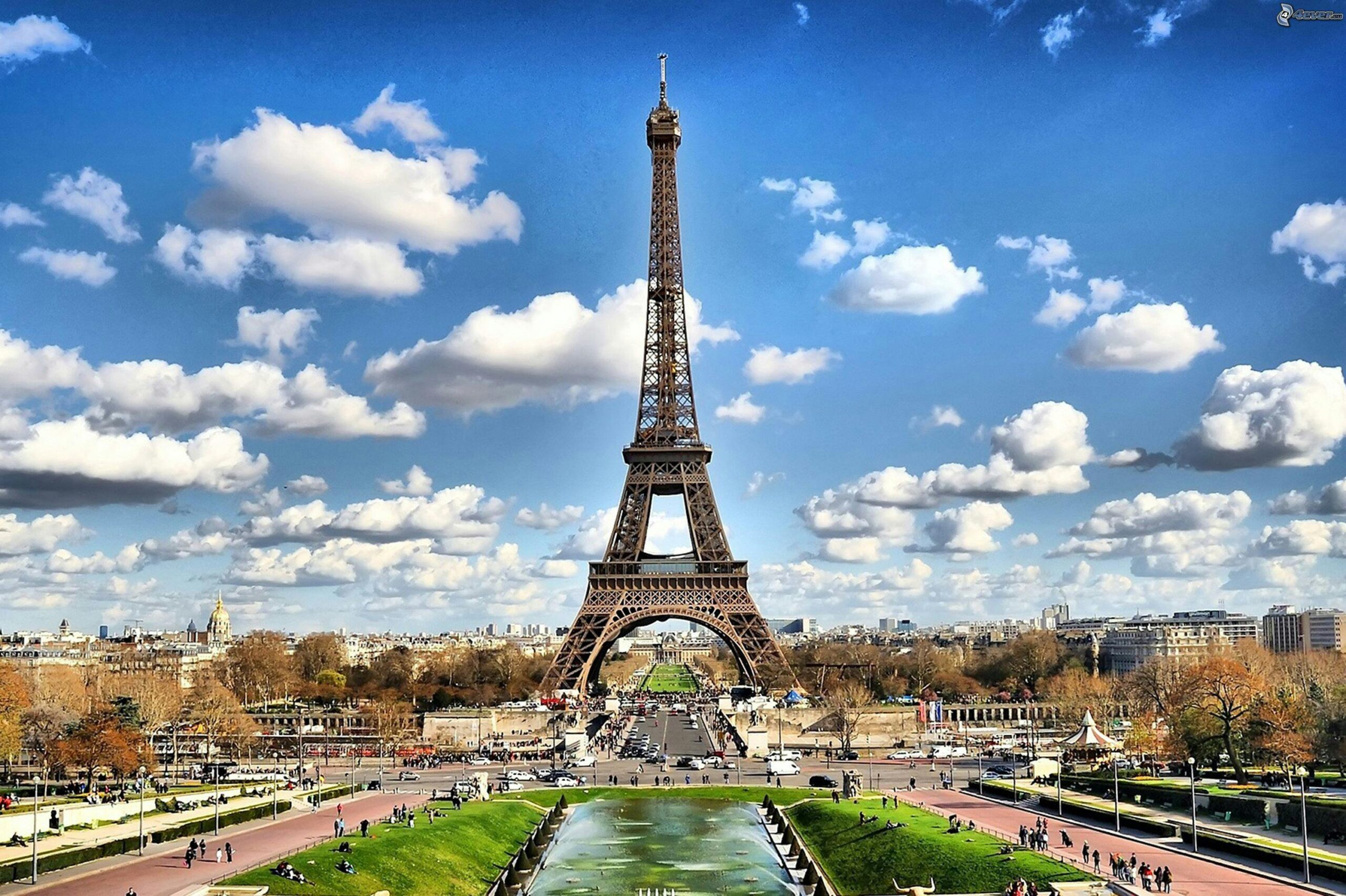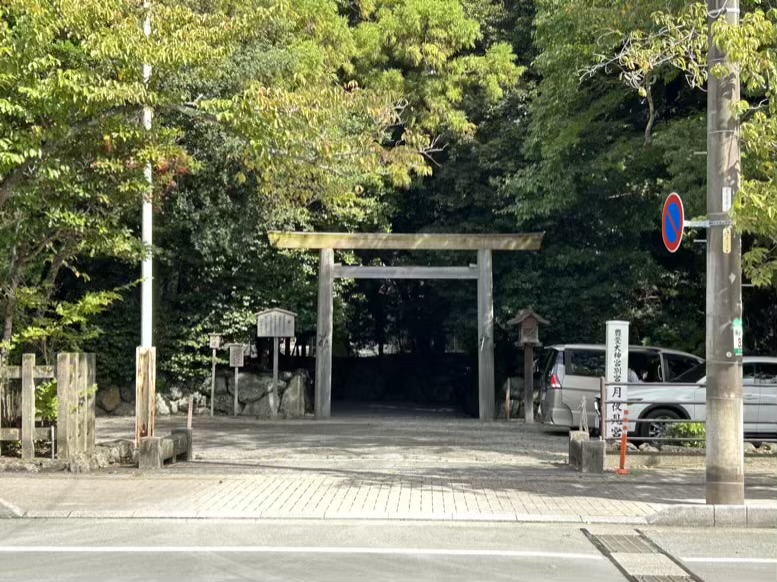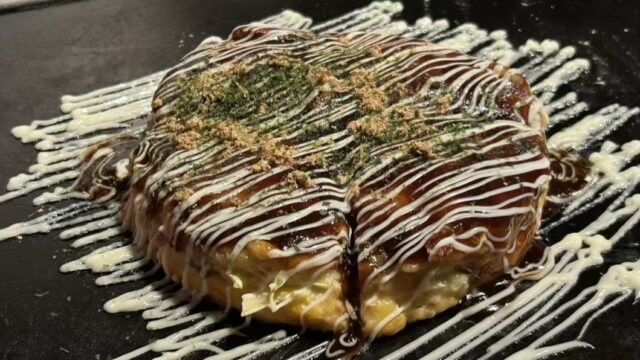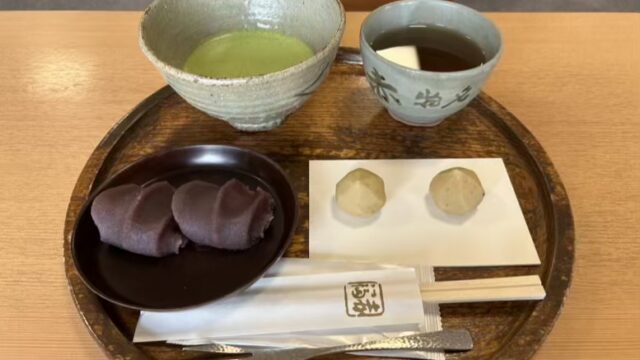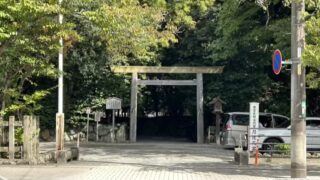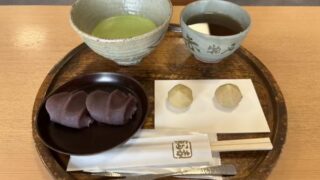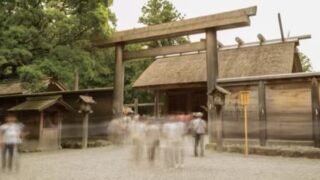Several days ago, when I visited Geku, Toyouke Daijingu, I took a short walk to Tsukiyomino-miya Shrine.
Although Tsukiyomino-miya Shrine is one of the Betsugu (auxiliary shrines) belonging to Geku, it is located outside the main precincts and stands independently as a special shrine.
Naiku has ten Betsuguu, and Geku has four.
Among Geku’s Betsugu, Tsukiyomino-miya Shrine holds the second-highest rank, following the Main Sanctuary.
Locals affectionately call ie “Getsuya.”
From Geku to Peaceful Kamiji-Dori
Tsukiyomino-miya Shrine sits quietly at the end of Kamiji-dori, a serene street stretching north from Geku’s North Gate, known as Kitamikado.
It takes about a 15-minutes walk from the main entrance of Geku, or just around 10 minutes if you start from Kitamikado.

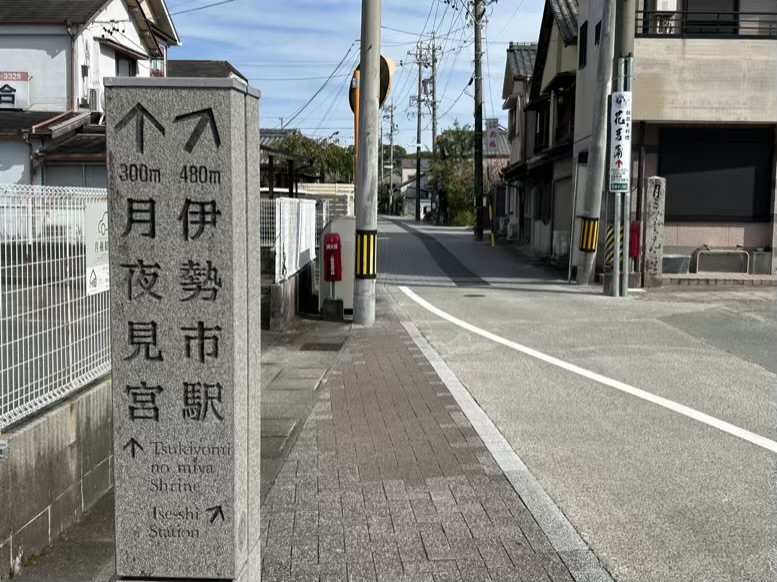
From the beginning of Kamiji-dori, you can already catch a glimpse of the torii gate of Tsukiyomi-no-miya in the distance.
There is an old tradition that you should not walk in the center of Kamiji Street. Since ancient times, the middle of the road has been believed to be the path for the deities, so people avoided walking there. This custom is still respected today.
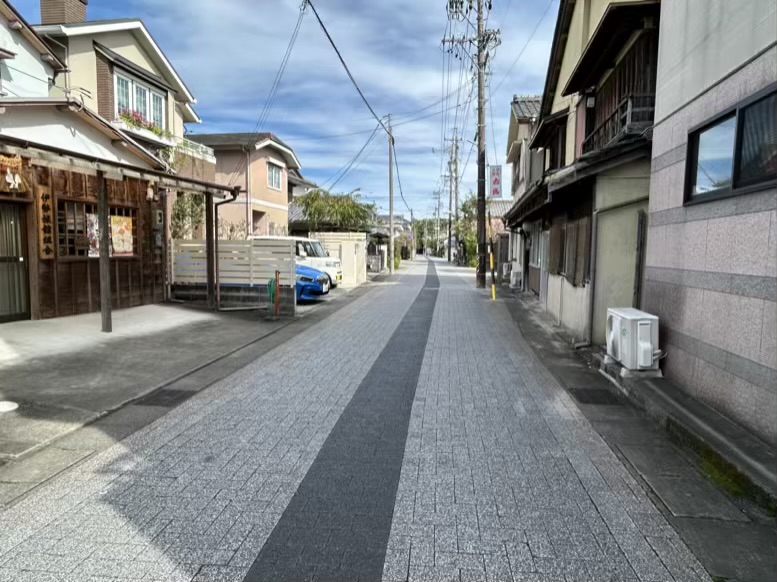
Shrine Dedicated to the Moon Deity
The deities enshrined at Tsukiyomino-miya Shrine(月夜見宮) are Tsukiyomino-Mikoto (月夜見尊) and his Aramitama (荒御魂, the spirited aspect of the deity).
Tsukiyoi-no-mikoto is the younger brother of Amaterasu-Omikami (天照大御神), the principal deity of the Inner Shrine (Naiku).
He is revered as the god of the moon and the ruler of the night.
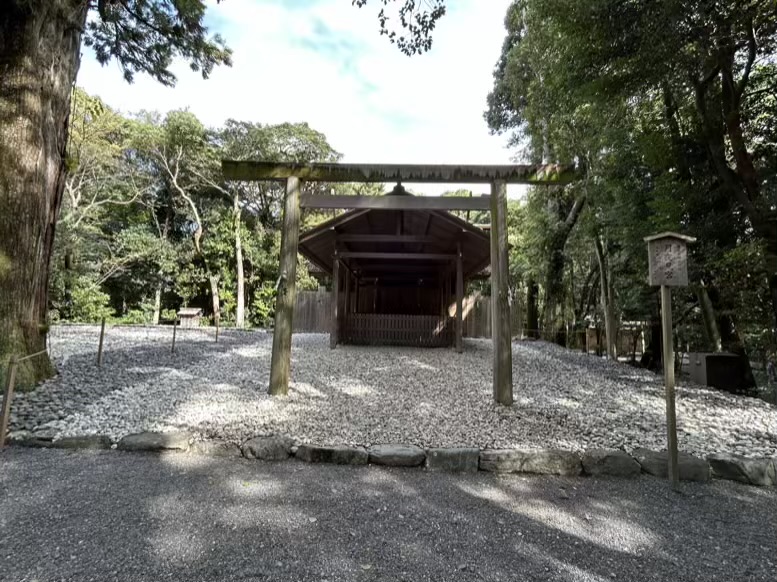
There is a legend passed down at Tsukiyoino-miya Shrine, where the moon deity Tsukiyomino-Mikoto resides.
According to the story, one of the stone walls at the shrine’s entrance transforms into a white horse at night. Tsukiyomino-mikoto is said to ride this horse and travel to the Outer Shrine (Geku) to attend the Higoto Asayū Ōmikesai – the daily morning and evening food offerings to the deities.
For this reason, people in the past avoided walking along Kamiji Street at night. If they absolutely had to pass through, they would walk quietly along the edge of the road so as not to disturb the deity.
Nearby Shrines
At the back on the right side of the shrine grounds stands Takagawara Shrine.
It enshrines the spirit (mitama) of Tsukiyomino-mikoto and is believed to protect the development and prosperity of the surrounding land.

On the left side, there is also a small Inari shrine. There is no signboard or explanation, and its direct connection to Ise Jingu is unclear.
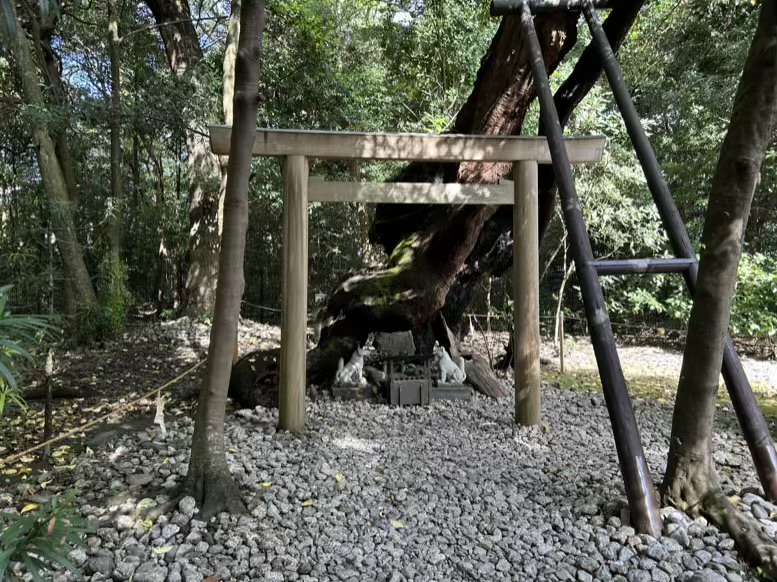
Goshuin and Amulets
At the Shukueiya (attendant’s office) located near the entrance of the shrine grounds, you can receive a goshuin (shrine seal) and omamori (protective amulets).
When I visited, the offering for the goshuin had been changed to a “pay what you wish” system. I was told that this policy now applied to all shrines within Ise Jingu. As a general guideline, many worshippers offer around 300 to 500 yen.
(Please check locally for the most up-to-date information.)
Embraced by Lunar Quietude
Tsukiyomi-no-miya is truly a hidden sanctuary. The sound of leaves swaying in the breeze, the scent of the earth, and footsteps echoing softly in the distance – everything here gently slows the passage of time.


If Outer Shrine (Gekū) expresses gratitude for the blessings of daily life, then Tsukiyomi-no-miya invites quiet reflection and inner harmony. Like the soft light of the moon illuminating the night, it brings calm and peace to the heart.
After visiting the Outer Shrine, if time allows, I highly recommend stopping by this serene place.
Toyouke Daijingu (Gekū) Betsugū — Tsukiyomino-miya Shrine
・Deities enshrined: Tsukiyomino-mikoto, Tsukiyomino-mikoto Aramitama
・Address: 1-3-19 Miyajiri, Ise-shi, Mie 516-0072, Japan
・Visiting Hours:
5:00–18:00 (Jan–Apr, Sep)
5:00–19:00 (May–Aug)
5:00–17:00 (Oct–Dec)
Closed: None
Parking: Available
これはCTAサンプルです。
内容を編集するか削除してください。
